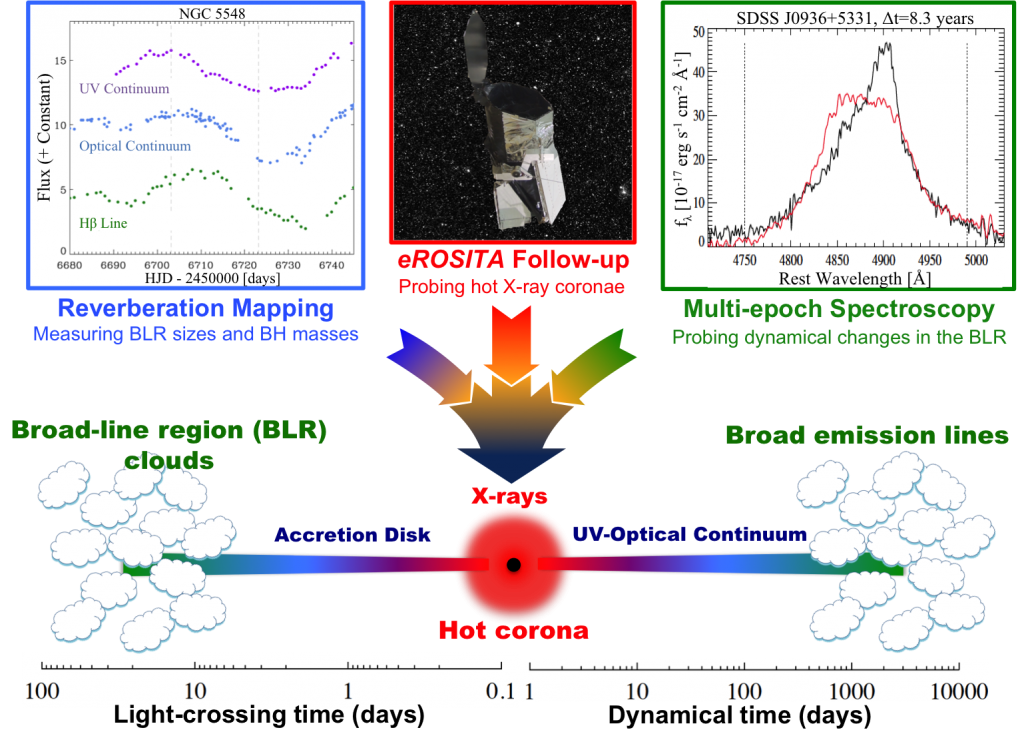The Black Hole Mapper (BHM) in SDSS-V is a multi-object spectroscopic survey that emphasizes optical spectra (often also with multiple epochs of spectrosopy) for more than 300,000 quasars to jointly understand the masses, accretion physics, and growth and evolution over cosmic time of supermassive black holes. BHM makes use of the existing BOSS spectrographs, which provide wide optical spectral coverage with a spectral resolution of R~2000. BHM will operate on the 2.5m telescopes at both Apache Point and Las Campanas Observatories.

Science Goals
Quasars are among the most luminous objects in the Universe. Powered by accretion onto supermassive black holes (BHs) at the centers of galaxies, quasars can be used as beacons to trace the growth of BHs over cosmic time. There is a tight correlation between the masses of the supermassive BHs and the galaxies that host them, which shows that there is a connection between the formation of the stellar component in a galaxy and of its supermassive BH. The BHM will provide mass measures, multi-wavelength spectral energy distributions (SEDs), and a detailed characterization of spectral variability for a large sample of quasars:
- BHM will observe with well more than a hundred epochs of time-domain spectra to determine black hole masses (via reverberation mapping) of over 1,000 quasars, spanning a very wide range of redshifts from 0.1 to 4.5 and luminosities from Lbol ~ 1045 to 1047 erg s-1.
- With a more modest number of epochs (a few to ten per target), optical spectral variability will be characterized for approximately 22,000 quasars, which will add to the knowledge of the astrophysics of supermassive BH accretion disks, dynamical changes in the broad emission line region, signatures of binary BHs, and the properties of quasar outflows.
- BHM is working closely (especially with colleagues at MPE in Germany) with the results of the next-generation eROSITA X-ray survey (part of the SRG mission, launched in 2019) to provide optical spectroscopic measurements, including identifications of the nature of and redshifts, for ~300,000 X-ray sources discovered early on by eROSITA. Most will be confirmed to be quasars via their SDSS-V/BHM follow-up spectra, e.g., providing an order of magnitude advance in X-ray/optical studies of the growth and evolution of quasars (unobscured and obscured) over cosmic time. BHM optical spectra will also encompass ~104 X-ray emitting clusters of galaxies, and thousands of X-ray emitting stars.
Many more details on the Black Hole Mapper data and science can be found starting on the BHM home/overivew page (and links therefrom), and in the SDSS-V White Paper SDSS-V: Pioneering Panoptic Spectroscopy.
Contact information
For more information on the Black Hole Mapper, contact the SDSS-V/BHM Program Head, Scott Anderson (University of Washington).
